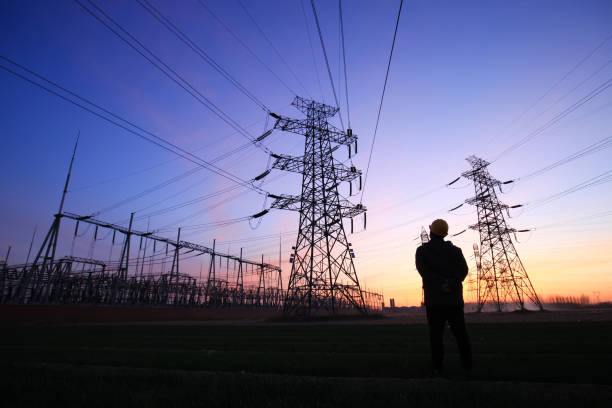The power of lightning is unstoppable and destructive to our homes. Fortunately, there is a way to divert this force of nature: the installation of a lightning rod and an Electrician in Dubai arrester, two distinct but complementary devices. Do these concepts speak to you? IZI by EDF precisely helps you in this article to make the difference between a lightning arrester and a lightning rod.
Surge arrester, lightning conductor: definitions
Surge arrester, lightning conductor. These similar terms do not designate the same thing. To compare the two devices, it is still necessary to know their role and their functioning. Here is their definition.
What is a lightning arrester?
A surge protector, also sometimes called a surge protector, is a specific module that is placed in your electrical panel or nearby and protects your Electrician in Dubai equipment from overvoltages caused by lightning.
Composed of diodes, spark gaps, or varistors, the surge arrester prevents the power of the lightning from entering your domestic electrical installation. In concrete terms, if lightning strikes your home, your power lines could melt and cause a fire. Your hardware would no longer work.
The risk of fire is not to be taken lightly. Lightning is indeed one of the main causes of fires of electrical origin. The storm can also cause voltage rises, in particular via the copper loop of your ADSL installation. The fiber is spared this problem because it does not conduct current.
What is a lightning rod?
The lightning rod is better known to the general public. This is the metal spike that sits on your roof. Its principle of action is very simple. The metal points magnetize the electrical services. The electrons then concentrate at a small point. The installation of a lightning rod thus makes it possible to be sure of the place where the lightning will strike.
The difference between a lightning arrester and a lightning rod
The differences between surge arresters and lightning rods are functional. One protects your electrical installation upstream from the impact of thunder, placed outside the home (lightning rod), while the other constitutes the last bastion against lightning, inside your home (lightning arrester).
In other words :
The lightning rod protects a building against the direct impact of lightning
The surge arrester protects the electrical installation against overvoltages
If the lightning conductor no longer acts and the Electrical
Services
reaches your installation, you are unfortunately no longer protected. This situation is far from being an isolated case. Lightning may strike the power line connected to your home or the transformer in your street. In this specific case, the surge arrester is essential! Surge arrester and lightning rod are then complementary.
The characteristics of a surge arrester
The surge arrester is only mandatory for regions identified by standard NF C 15-100 as being victims of frequent storms. Two criteria (lightning density and keraunic level) made it possible to target more than thirty departments in France and overseas where the installation of a surge arrester is mandatory.
Types of surge arrester
Need to protect your home from lightning? These three models of type 1, 2, or 3 surge arresters will certainly meet your needs:
Gap arresters are made up of two electrodes between which the current passes and is evacuated into the ground (if overvoltage requires)
Varistor surge arresters consist of a resistor blocking a much too high voltage. The current is drained through the resistor to ground
Transit diodes provide better protection than other types of surge arresters. Their operating system is similar to that of varistors
To install a surge protector suitable for your home and your region, ask a qualified electrician for the advice!
The case of lightning arresters
You may have already heard of Electrician in Dubai arresters to be plugged inside the home… Their role? Protect and power a sensitive home device, such as a PC or game console. Alone, this means of protection is ineffective, because it does not block the power of a flash. Coupled with a lightning arrester, it would however act as an additional wall before your equipment is destroyed.
Be careful, if lightning strikes a transformer located relatively far from your home, the residual power can destroy your devices. In this case (admittedly rare, but possible), the lightning protection sockets take over and protect your devices. Some surge protection socket models also allow the passage of an Ethernet cable through an RJ45 socket to protect your local network.
Characteristics of a lightning rod
As is the case with lightning arresters, the installation of a lightning rod is compulsory in departments sensitive to the risk of thunderstorms, identified by the Electrician in Dubai standard in force, NF C 15-100. A good southern half of the country is concerned, as well as several overseas territories.
The impact of lightning is titanic and not without danger. Under the force of lightning, a struck tree can be cut in two, or a wall collapse instantly. The lightning rod is then very useful for channeling the energy released by lightning.
